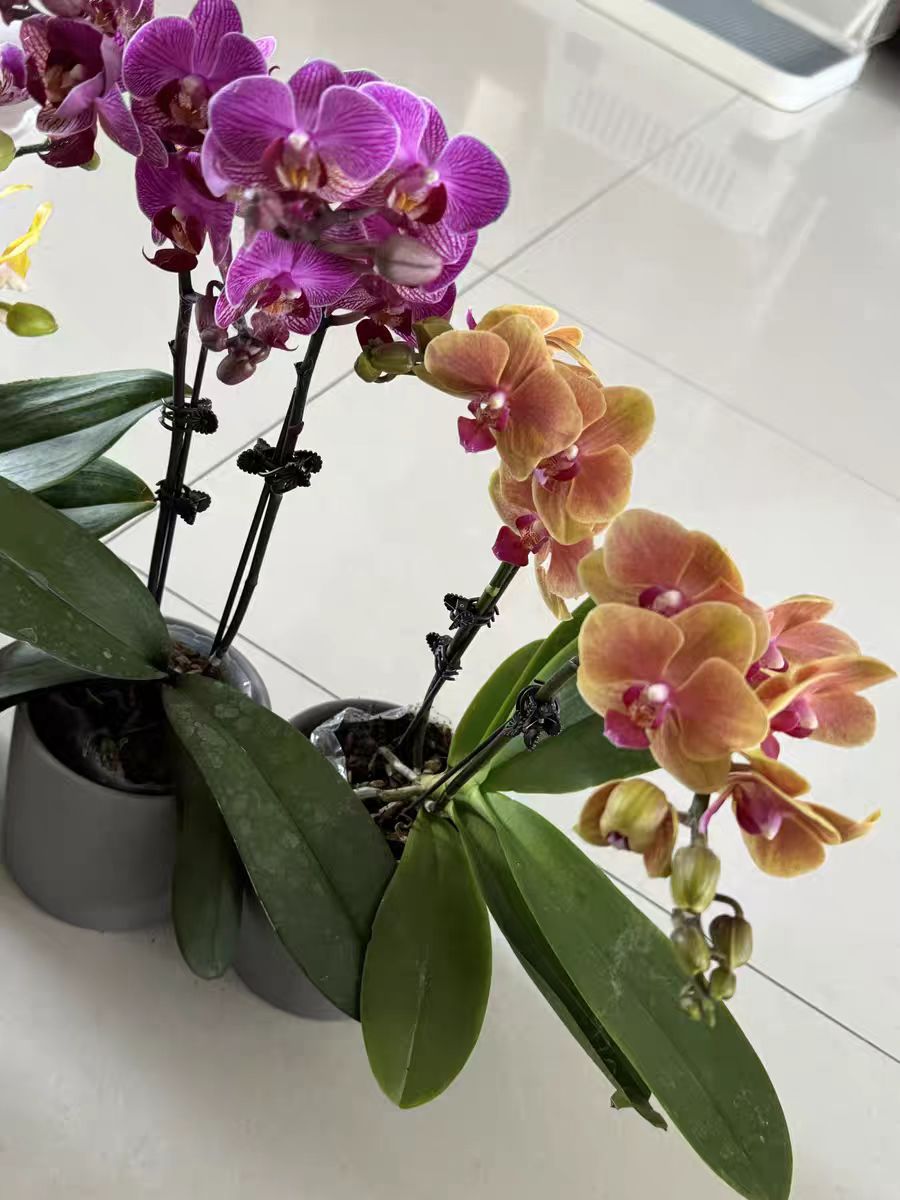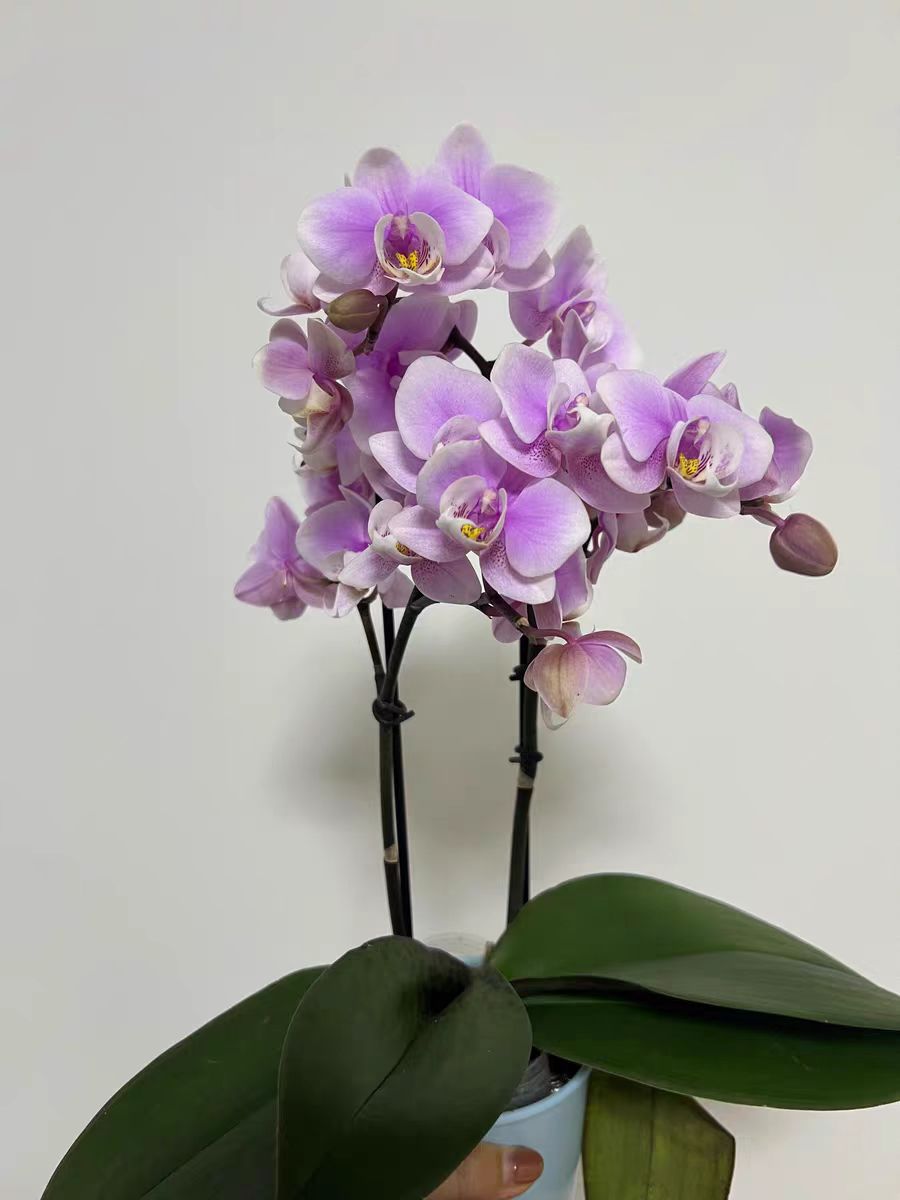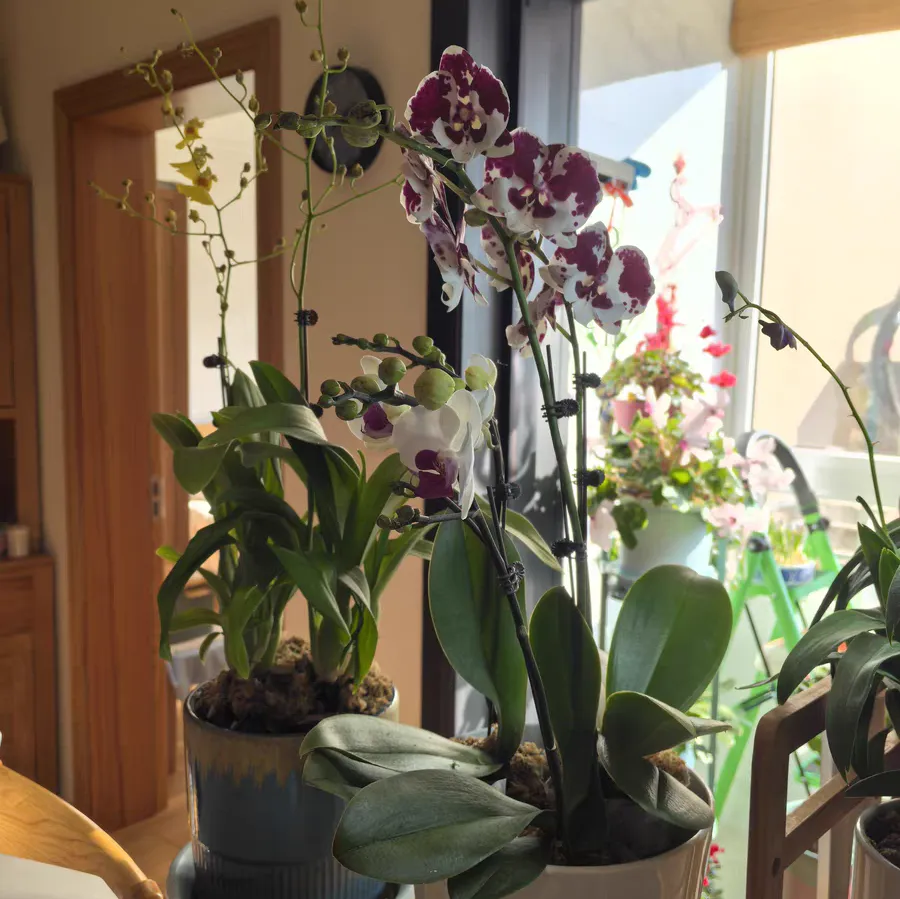Phalaenopsis is a beautiful and delicate orchid. However, the low temperatures in winter pose a significant challenge to their growth and blooming. The following will introduce in detail how to provide effective warmth preservation measures for phalaenopsis in a low-temperature environment, as well as the appropriate temperature control methods for flower forcing, helping the phalaenopsis in your home to survive the cold winter and bloom beautifully.
Warmth Preservation Techniques for Phalaenopsis in Low Temperatures:
Temperature Monitoring and Precise Control: The growth temperature of phalaenopsis should be maintained between 18-28 degrees Celsius. In winter, the indoor temperature often drops. At this time, we need to take some measures to keep the indoor temperature stable. For example, we can use equipment such as heating pads, greenhouses, or thermostats to ensure that the indoor temperature does not fall below this range. At the same time, regularly check the indoor temperature to avoid sudden drops in temperature caused by equipment failures or changes in the external temperature.
Sufficient Light, Warm as Spring: Light is also an important factor for the warmth preservation of phalaenopsis. In winter, the sunlight becomes soft and precious. We should try our best to ensure that phalaenopsis receives sufficient sunlight. They can be placed near the window, or plant lights can be used to supplement the light. Sufficient light not only provides warmth for phalaenopsis but also promotes their photosynthesis and enhances their resistance.
Ventilation to Avoid Dampness: While keeping warm, ventilation should not be ignored. A closed environment for a long time will lead to high air humidity, which is likely to cause diseases and pests of phalaenopsis. Therefore, we need to open the windows regularly for ventilation to keep the indoor air flowing. However, be careful not to expose the phalaenopsis directly to the cold wind during ventilation to avoid freezing.
Reasonable Watering to Maintain Moisture: In winter, the growth rate of phalaenopsis slows down, and their water demand also decreases accordingly. Therefore, we need to control the amount of watering reasonably to avoid root rot caused by overly wet soil. We can water the phalaenopsis after the surface of the soil becomes slightly dry, and try to use warm water for watering to reduce the stimulation to the roots. At the same time, we can also increase the air humidity by spraying, but be careful not to spray directly on the leaves.
For enthusiasts who want to force phalaenopsis to bloom in winter, temperature control is the key. The following are some recommended temperature control methods:
Control of Day-Night Temperature Difference: When forcing phalaenopsis to bloom, a certain day-night temperature difference needs to be maintained. Generally, the daytime temperature should be controlled between 25-27 degrees Celsius, and the nighttime temperature should be controlled between 18-20 degrees Celsius. Maintaining a day-night temperature difference of 6-8 degrees Celsius is conducive to the formation of flower buds. At the same time, it takes 30-45 days of a low-temperature period for the flower buds to begin to form.
Appropriate Temperature Range: In addition to the day-night temperature difference, attention also needs to be paid to the overall temperature range of phalaenopsis. During the flower forcing process, the maximum daytime temperature should not exceed 32 degrees Celsius, and the minimum nighttime temperature should not be lower than 15 degrees Celsius. Such a temperature range is beneficial to the growth and blooming of phalaenopsis.
Timing of Temperature Adjustment: During the flower forcing process, if it is found that the phalaenopsis grows slowly or the flower buds form poorly, the temperature can be adjusted appropriately. For example, when the flower stalk grows to a certain length, the temperature can be appropriately increased to promote the blooming of the flowers. However, it should be noted that the temperature adjustment should be gradual to avoid adverse effects on the phalaenopsis caused by sudden temperature changes.
Through the above introduction, I believe you have understood how to provide effective warmth preservation measures for phalaenopsis in a low-temperature environment and the appropriate temperature control methods for flower forcing. As long as you take good care of them, I believe your phalaenopsis will surely bloom beautifully in the cold winter.
How to Keep Phalaenopsis Warm in Low Temperatures?

Share with
Tagged in :




Leave a Reply